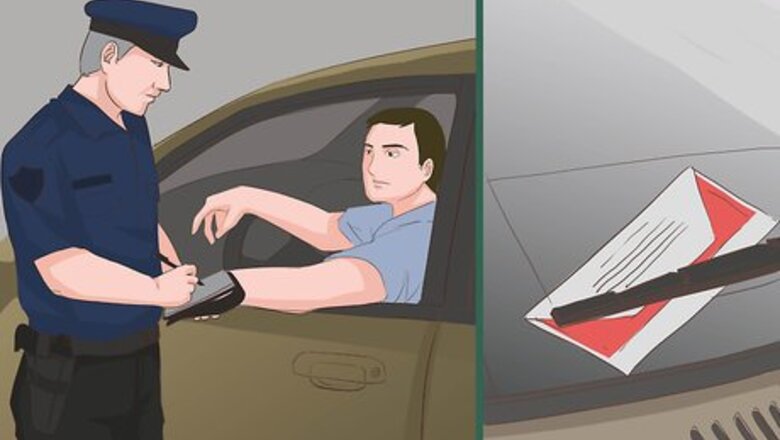
views
Applying for a Restricted Driver’s License
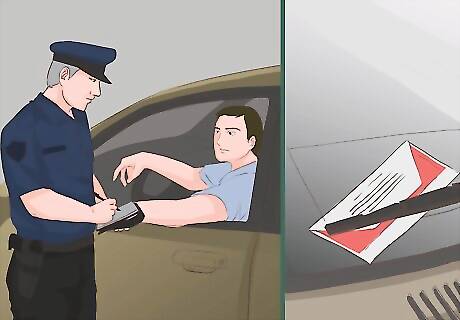
Determine if you are eligible. You are generally only able to apply for a hardship license after you’ve been suspended for a first offense. You’ll also need to prove why you need a license. Sometimes it is possible to get a limited permit that allows travel to and from work. Attending school or caring for others in need of transportation are other possible reasons.

Complete your application. Contact your local Department of Motor Vehicles (DMV) or the agency that regulates licenses in your area and inquire about the application requirements. Be careful filling out any forms and make sure that you complete them in full. Then, attach any required documents or pieces of evidence that they might ask for, such as a statement showing a child visitation schedule requiring driving. If the forms are overly complicated or if you are worried about being successful with your application, consider hiring an attorney to complete the paperwork for you. Other types of hardship evidence include an enrollment verification if you are enrolled in school. Or, a note from your employer describing your responsibilities and work hours. For a medical excuse, provide a doctor’s letter. Whatever document you choose, get it on official letterhead, if possible.

Show proof of insurance. You will likely have to complete a form with all of your insurance information as part of your application package. Make sure that your insurance is current and meets your state’s minimum coverage requirements. It’s also a good idea to attach a printed out copy of your insurance card.

Follow any restrictions placed upon your hardship license. You may be allowed to drive with relative freedom until your old license is reactivated. Or, you may be required to only operate your vehicle during certain hours and on certain days. The court and DMV may also require that you only drive a set route.

Alert the DMV regarding any changes to your information. Once your restricted license is active, make sure to stay in contact with the DMV. If your address, phone number, or reason for the license changes at all, then contact the DMV immediately with updated information. Otherwise, you could be considered in violation of the law and your privileges can be taken away.
Using Public Transportation or Ridesharing
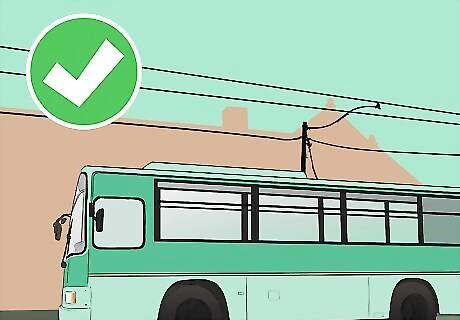
Take the bus for a cheap option. Now most urban and rural areas have some sort of bus system in place. Find a map of the routes and the schedules online by searching your city’s name and “bus” or “public transportation.” Then, plan your trips in advance, so that you don’t miss the bus. You can even download a travel or transit app to help with planning. Check with the bus company or transit authority to find out how to pay for the fare, and how much it will be, in advance. Some buses require exact change or pay-in-advance cash cards. Use the extra travel time to get some work done by bringing your laptop along. You can also just relax or play on your phone for a bit. You’ll likely save hundreds of dollars for each month that you take the bus instead of driving.

Hop on a light or commuter rail line for speedy travels. Determine if your area has this type of transportation available by searching your city’s name and “rail line” online. You could also contact your local transit authority. To travel on a rail line, look at the line map and schedule. Plan your trip carefully so that you arrive at the rail stop on time. Some lines even offer free fares for short distances. Or, you can get a fare card, which might reduce the total fare that you’ll pay. This is a great option for daily commuters.
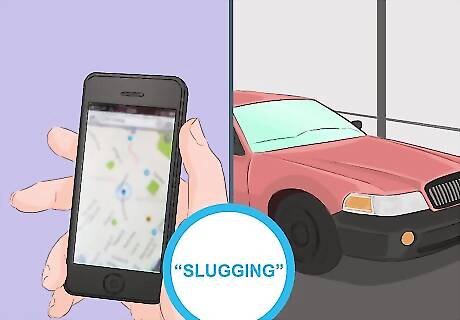
Try “slugging” during high-traffic periods. This isn’t that widespread yet, but it may be an option in larger cities, such as Washington D.C. To “instant carpool” or “slug” you’ll need to go online to a website listing the location of “slug lines.” Then, you wait for a driver to pick you up and take you to your destination. The driver, in turn, gets to use the HOV (high-occupancy vehicle) lane due to you being in their car. “Slugging” is usually only available at rush-hour periods when drivers are willing to exchange space in their car for a speedy commute. Be aware that “slugging” is not regulated, so you’ll want to keep safety in mind when accepting a ride from a stranger.
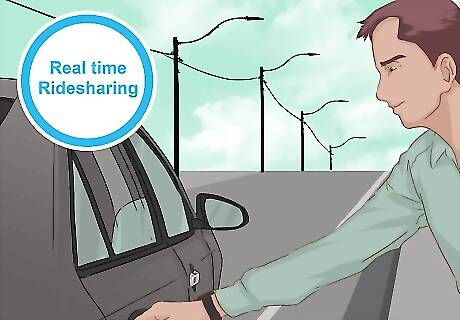
Go with real-time ridesharing. This is not a commercial service, like Uber, but an informal network of drivers looking for extra passengers. Potential drivers will usually post listings on search sites, like Craigslist. They’ll usually ask for gas money or a flat fee for each ride, although some are free-of-charge. This can be a convenient option in a big city, but may not be as safe as a taxi or ridesharing service.

Try a taxi or a commercial ridesharing service. You can go with a taxi company, although that may get costly over time. Depending on how modern the company is it can also be a bit of a hassle to schedule rides. Uber, Lyft, or another ridesharing service is another option. You can schedule rides online or by phone well in advance. You’ll also know exactly how much you’ll owe the driver before even getting into the car. Many riders find that services, such as Lyft, provide cleaner, more comfortable experiences than the traditional taxi. Be aware that ridesharing companies usually boost their rates to reflect periods of high demand and special events. For example, a ride on a Saturday night will likely cost you much more than one on Tuesday evening. Company vetting and a driver rating system add a measure of safety to the ridesharing system. But, it’s still best to trust your instincts.
Carpooling, Walking, and Biking
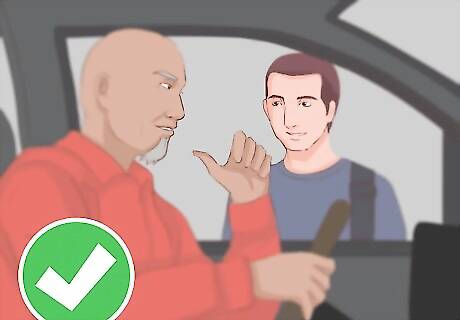
Ask friends or family members for rides. Find out if they are heading to the grocery store and ask if they’d mind picking you up too. Try to not to rely overly much on one person and don’t ask anyone to take you too far out of their way. But, if they live close by and genuinely don’t seem to mind, it never hurts to ask for help. To sweeten the pot, offer to pay for gas. For example, you might say, “I know that you hit the grocery store on Wednesdays. I need to grab some things, too. Would you mind picking me up and I’ll go with you?” Hadley Freeman Hadley Freeman, Pop Culture Bestselling Author Losing one's driving privileges can feel like the end of autonomy, but it needn't spell disaster. With some pluck and ingenuity à la Ferris Bueller, one can tap into public transit, rideshares, bicycles and good old shoe leather to stay on the move. Though not as fun as joyriding in a Ferrari, mastering the local bus map or convincing your sibling to play chauffeur could unlock new skills and solidarity.
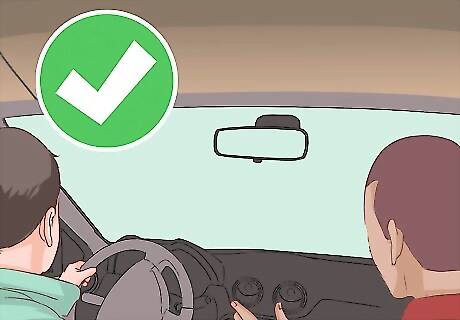
Carpool with coworkers. Find out if any of your coworkers live in your neighborhood. Then, ask if they are willing to stop by and pick you up on the way into work. You can also try to join in on a carpool group that is already established. In exchange for not taking a turn driving, offer to chip in for gas or buy everyone lunch on occasion. If the same person drives every day, offer to contribute some money towards their parking permit, if needed. A positive of carpooling is the opportunity to get to know your coworkers. However, a downside is that you’ll need to stick to a strict schedule to keep everyone from being late.

Walk short distances. Throw on your tennis shoes and hit the pavement. Try to stick to routes that you are familiar with and those that have sidewalks. Avoid walking at night unless you have on reflective safety gear. Not only is walking free, you’ll soon find yourself getting in even better shape. Be prepared to take longer getting to your destination. And, you may be sweaty when you arrive. Have a plan to counteract this if you are walking to work.
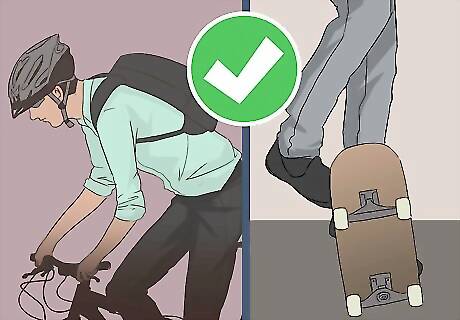
Bike or skate. Biking or skating are faster options than walking with even better health benefits. Map out your route beforehand and avoid any challenging areas if you aren’t an experienced cyclist. Be very careful biking on the road if there isn’t a designated “bike lane.” Follow all traffic rules and keep an eye out for drivers. Due to the popularity of bike commuting, some cities have even created bike share programs. These are bike stands that allow short-term rentals. Bikes are targets for thieves. To keep your bike safe, lock it up with a heavy U-lock around the frame. As with walking, biking may not be the best option on bad weather days. So, make sure to have a back-up plan.



















Comments
0 comment